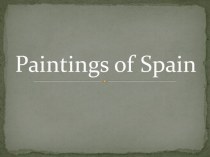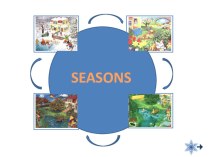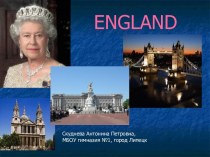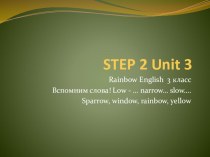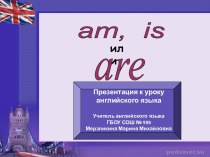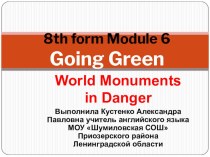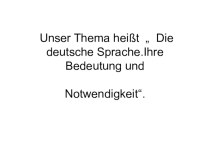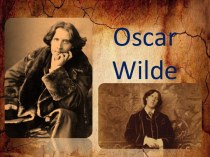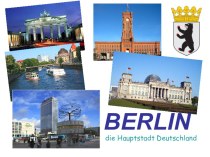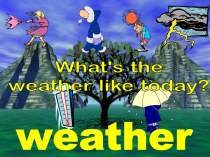- Главная
- Разное
- Бизнес и предпринимательство
- Образование
- Развлечения
- Государство
- Спорт
- Графика
- Культурология
- Еда и кулинария
- Лингвистика
- Религиоведение
- Черчение
- Физкультура
- ИЗО
- Психология
- Социология
- Английский язык
- Астрономия
- Алгебра
- Биология
- География
- Геометрия
- Детские презентации
- Информатика
- История
- Литература
- Маркетинг
- Математика
- Медицина
- Менеджмент
- Музыка
- МХК
- Немецкий язык
- ОБЖ
- Обществознание
- Окружающий мир
- Педагогика
- Русский язык
- Технология
- Физика
- Философия
- Химия
- Шаблоны, картинки для презентаций
- Экология
- Экономика
- Юриспруденция
Что такое findslide.org?
FindSlide.org - это сайт презентаций, докладов, шаблонов в формате PowerPoint.
Обратная связь
Email: Нажмите что бы посмотреть
Презентация на тему по английскому языку на тему Art styles.
Содержание
- 2. Part of the joy of painting in
- 3. Art Style: Photorealism Photorealism, Super Realism, Sharp
- 5. Art Style: Realism Realism is the art
- 7. Art Style: Painterly Painterly is an art
- 9. Romantic is a style of art popular
- 10. Art Style: Impressionism Impressionism is an art
- 12. Art Style: Expressionism Expressionism is characterized by
- 13. Modernism describes both a set of cultural
- 15. Art Style: Abstraction (abstract art)Abstractionism is about
- 16. Abstract art doesn't try to look like
- 17. Surrealism is a cultural movement that began
- 19. Futurism is a style of art in
- 20. Action painting, sometimes called gestural abstraction, is
- 22. Cubism is a 20th century style of
- 23. Скачать презентацию
- 24. Похожие презентации
Part of the joy of painting in the 21st century is the range of art styles to choose from. The late 19th century and 20th century saw artists make huge leaps in painting styles, influenced by
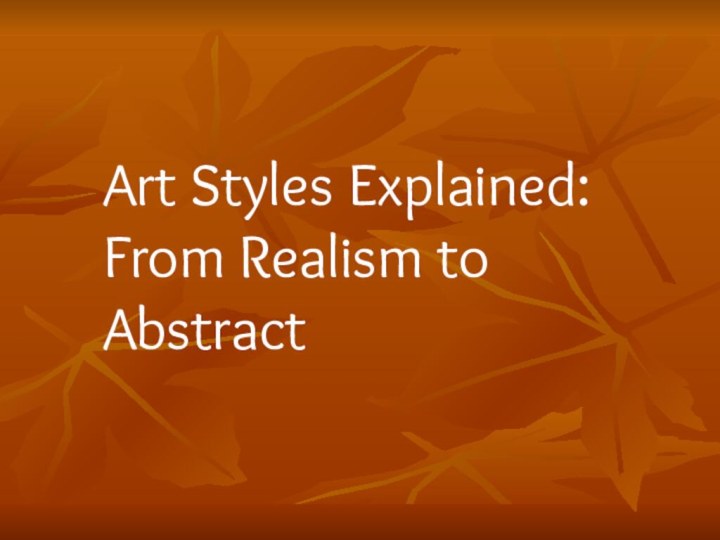
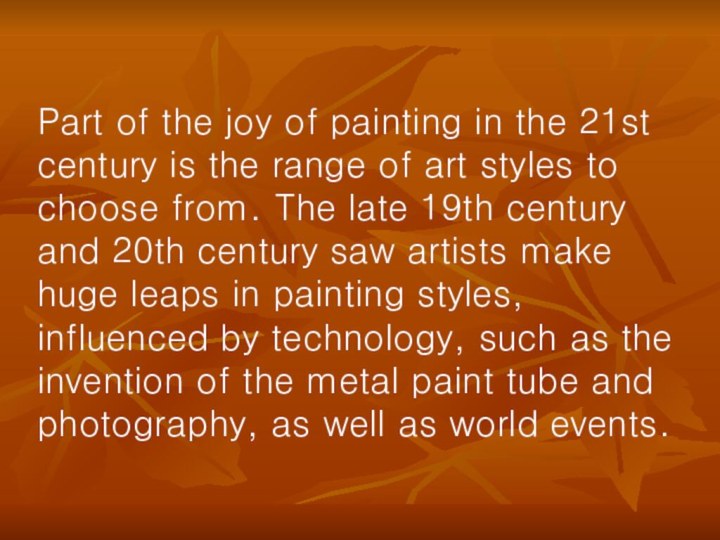

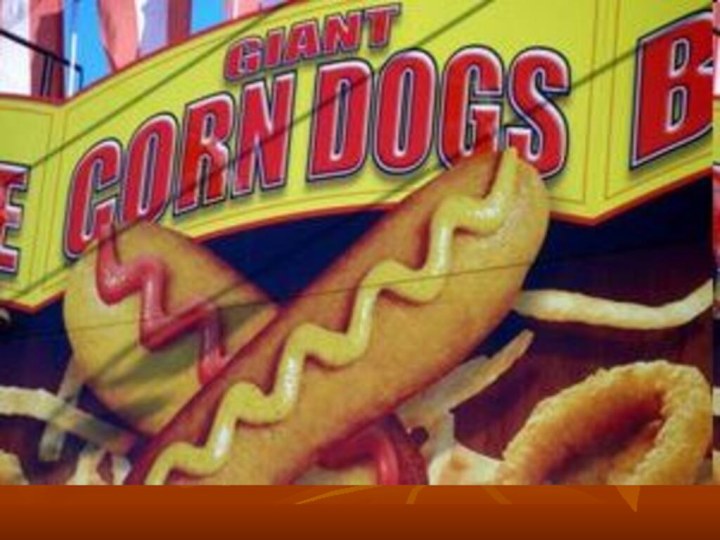
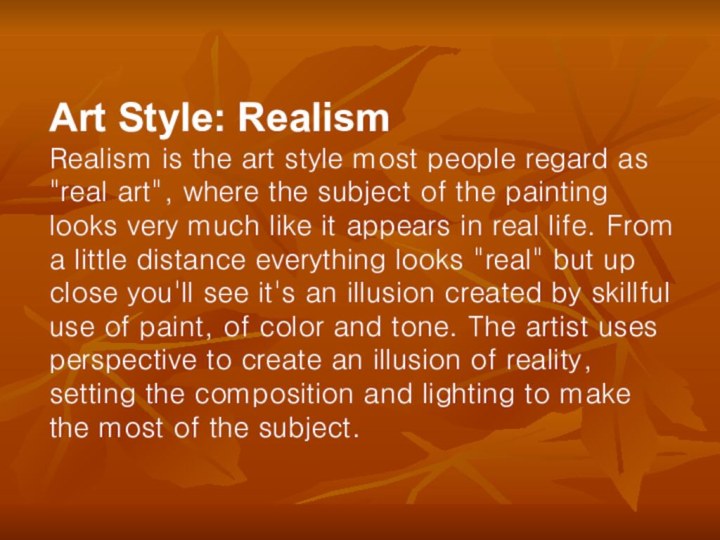
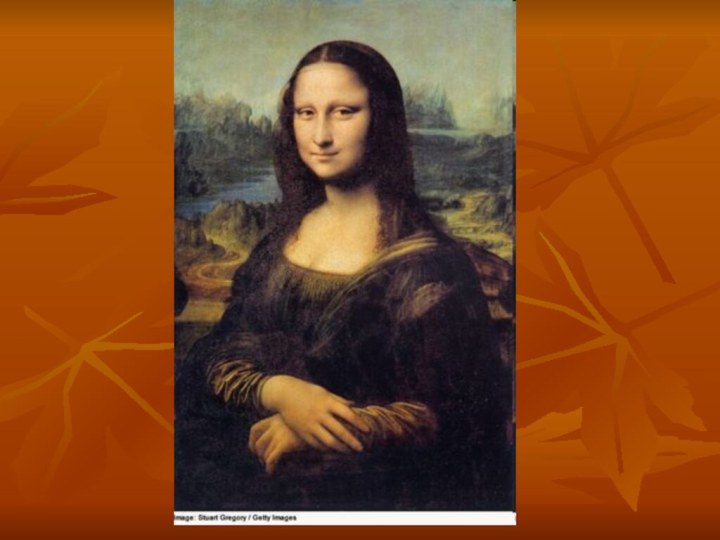
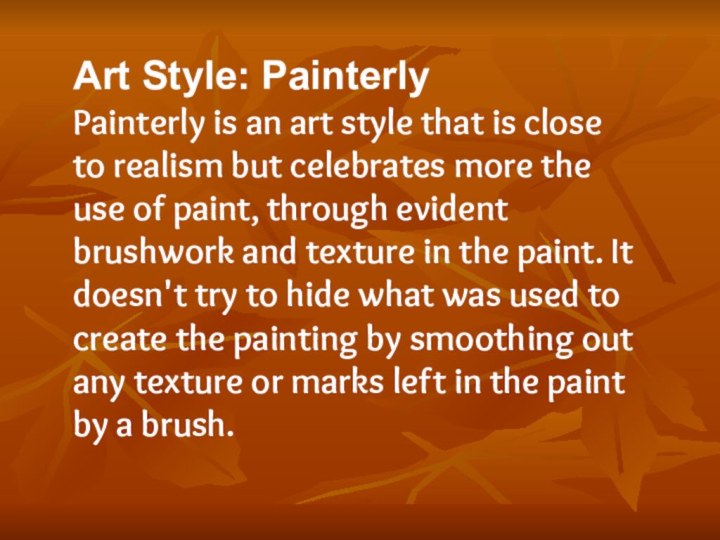
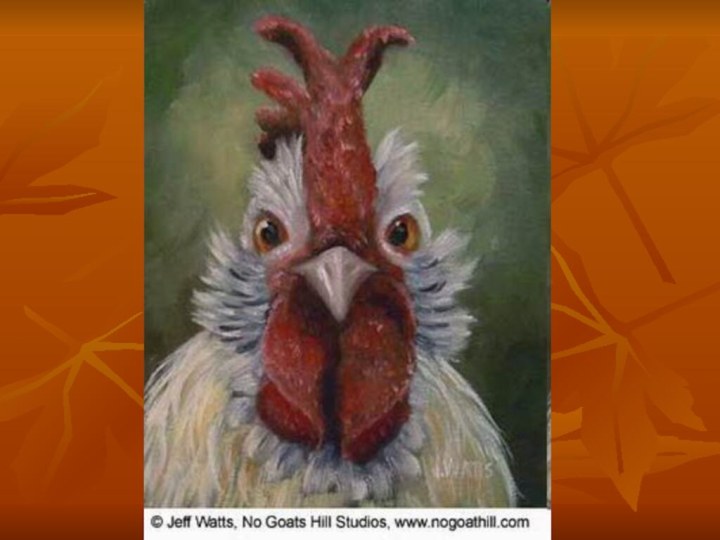
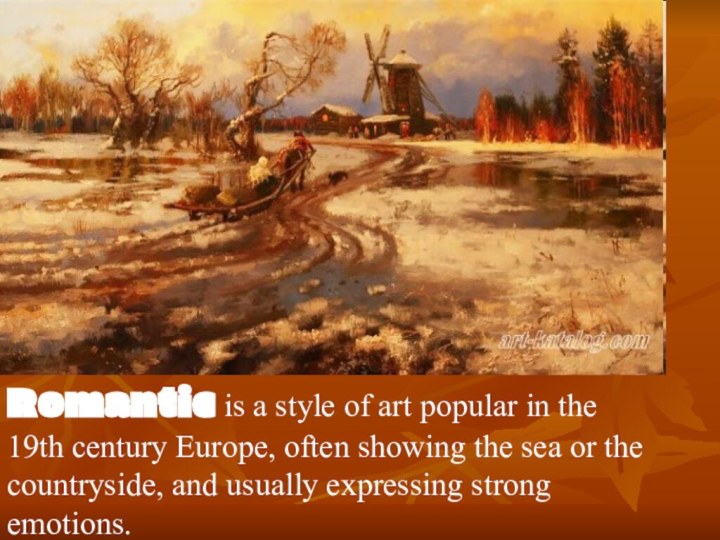
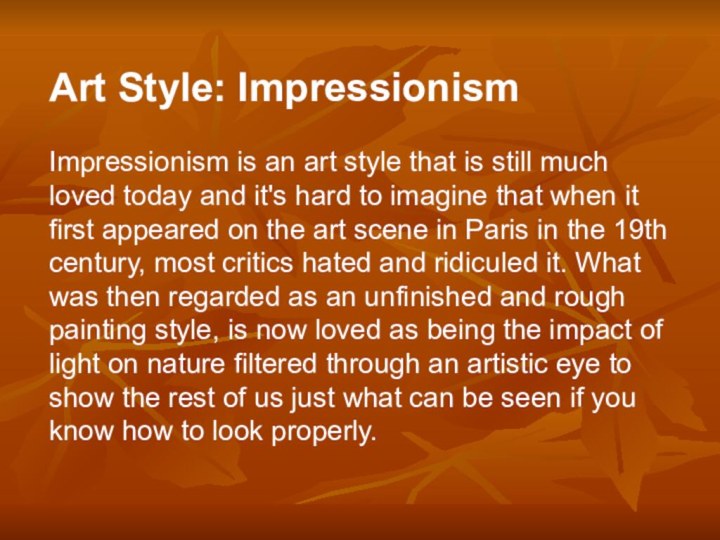
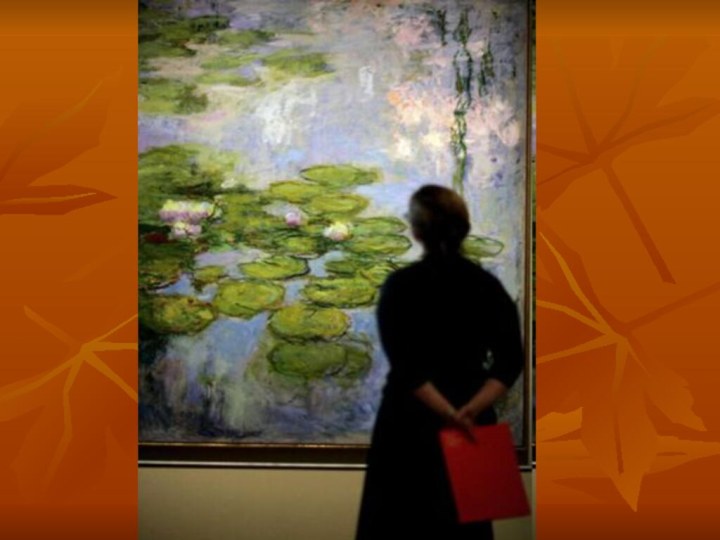

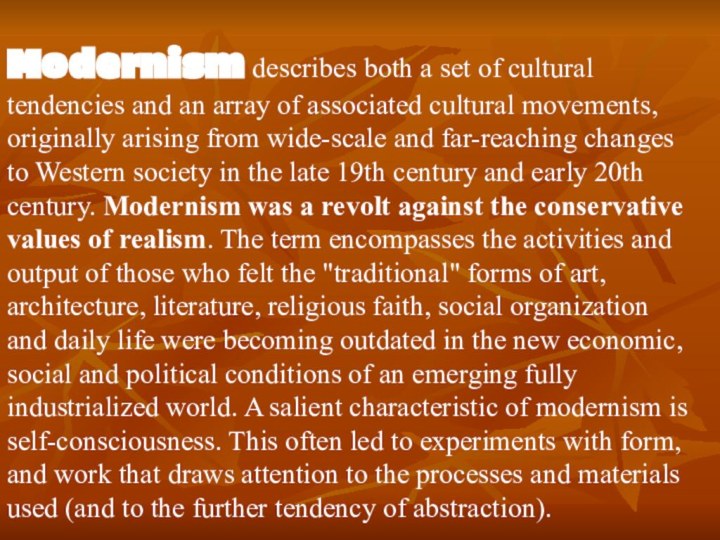
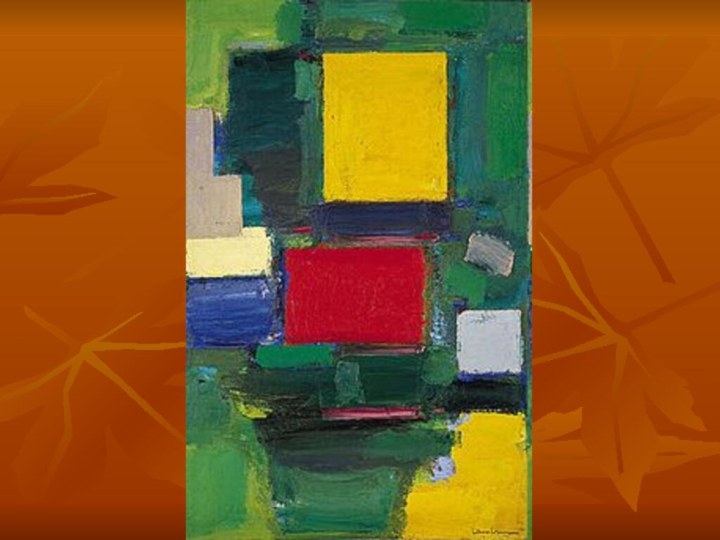
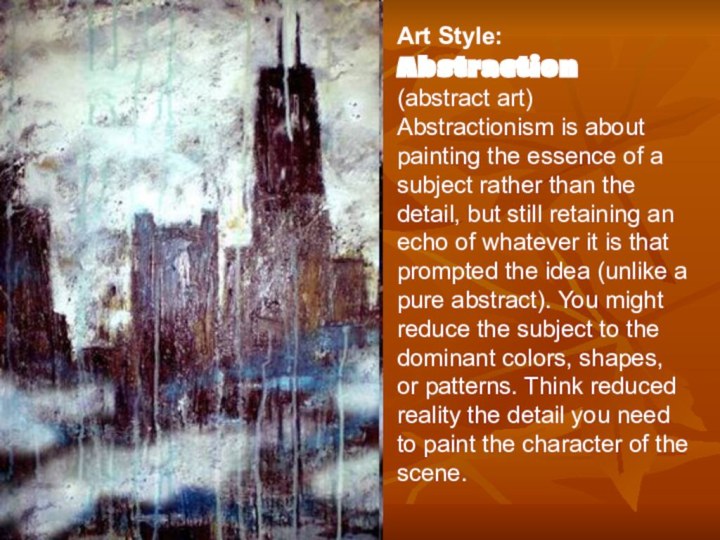
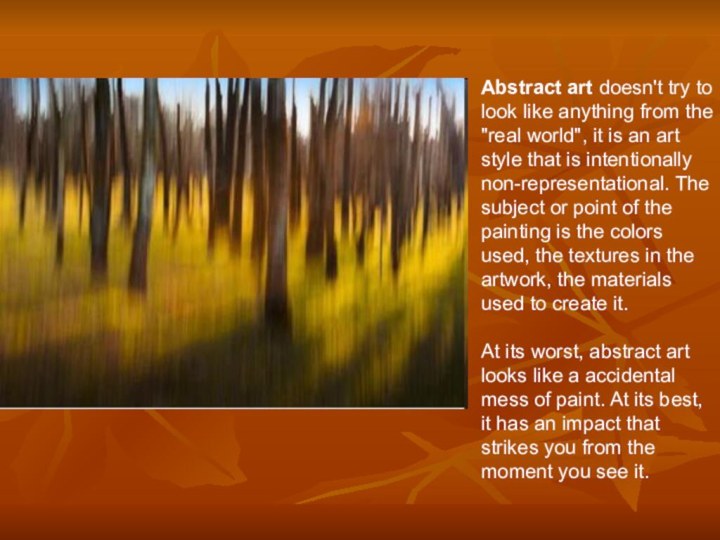
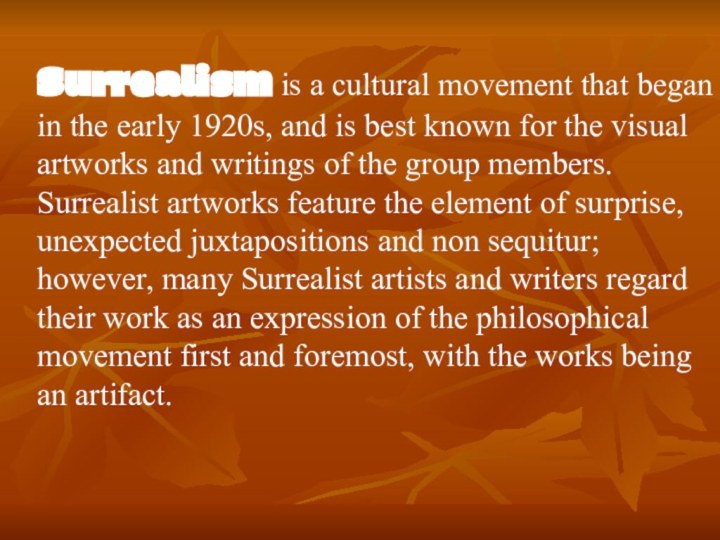
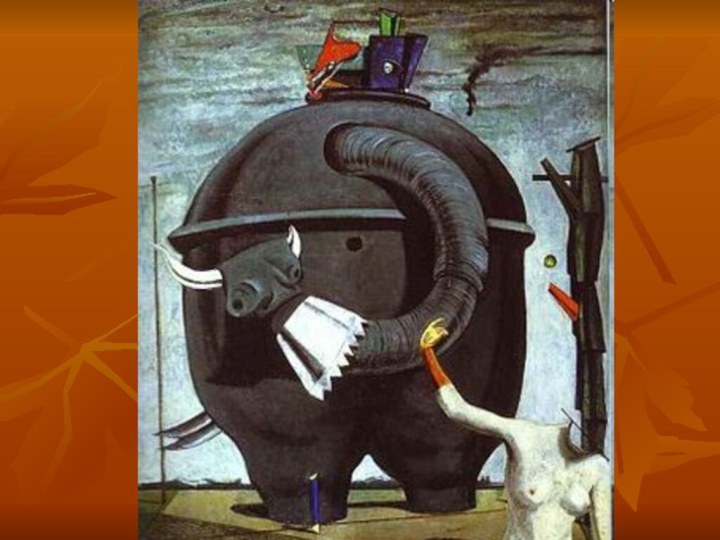
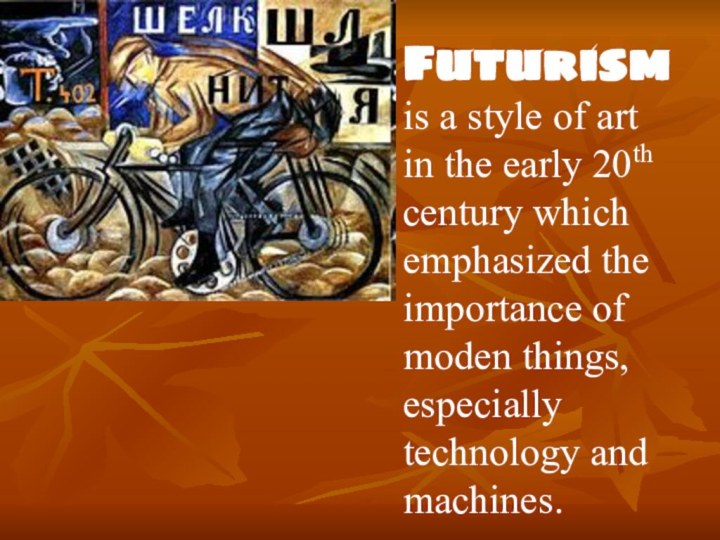
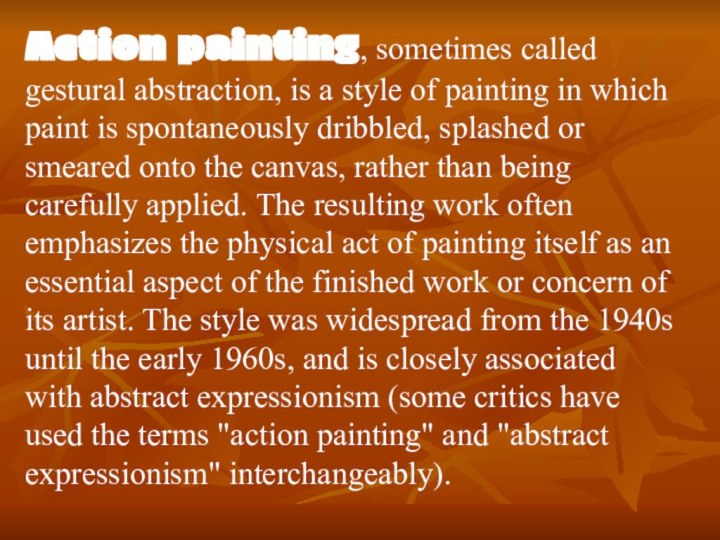
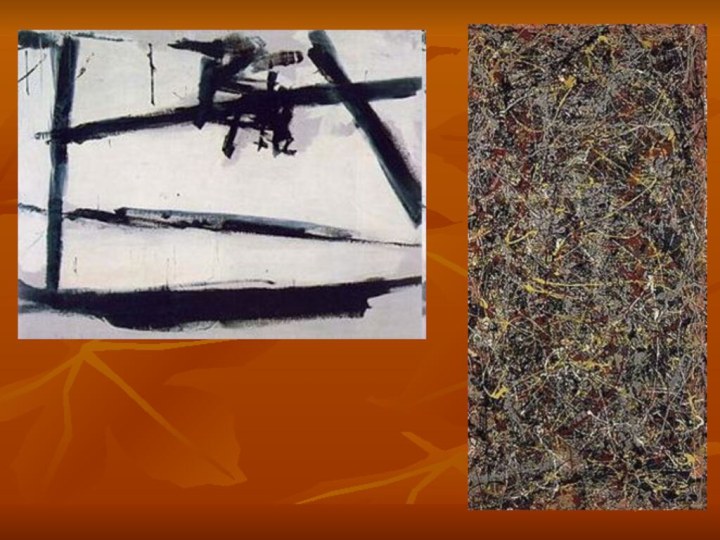


Слайд 3
Art Style: Photorealism
Photorealism, Super Realism, Sharp
Focus Realism, Hyper Realism, you can call it whichever
of these labels you prefer and argue about the minute details between the styles, but ultimately they're all art styles where the illusion of reality is created through paint so the result looks more like a large, sharply focused photo than anything else.Photorealism is a style which often seems more real than reality, with detail down to the last grain of sand and wrinkle on someone's face. Where nothing is left out, nothing is too insignificant or unimportant not to be included in the painting. Though it doesn't mean an artist painting in this style doesn't consider the arrangement of things to make a stronger composition.
Слайд 5
Art Style: Realism
Realism is the art style
most people regard as "real art", where the subject
of the painting looks very much like it appears in real life. From a little distance everything looks "real" but up close you'll see it's an illusion created by skillful use of paint, of color and tone. The artist uses perspective to create an illusion of reality, setting the composition and lighting to make the most of the subject.
Слайд 7
Art Style: Painterly
Painterly is an art style
that is close to realism but celebrates more the
use of paint, through evident brushwork and texture in the paint. It doesn't try to hide what was used to create the painting by smoothing out any texture or marks left in the paint by a brush.Слайд 9 Romantic is a style of art popular in
the 19th century Europe, often showing the sea or
the countryside, and usually expressing strong emotions.
Слайд 10
Art Style: Impressionism
Impressionism is an art style
that is still much loved today and it's hard
to imagine that when it first appeared on the art scene in Paris in the 19th century, most critics hated and ridiculed it. What was then regarded as an unfinished and rough painting style, is now loved as being the impact of light on nature filtered through an artistic eye to show the rest of us just what can be seen if you know how to look properly.
Слайд 12
Art Style: Expressionism
Expressionism is characterized by the
artist not feeling compelled to use realistic colors or
using perspective techniques to recreate an illusion of reality. Rather colors are selected to fit the emotion felt or to create emotional impact.In the example of this art style shown, for instance, while we know no-one's face is truly green, nor does anyone have a line around their chin or for a nose, we still recognize it as a painting of a face. But instead of it focusing on being a likeness of someone, it's a painting that conveys a sense of mood and emotion foremost.
Слайд 13 Modernism describes both a set of cultural tendencies
and an array of associated cultural movements, originally arising
from wide-scale and far-reaching changes to Western society in the late 19th century and early 20th century. Modernism was a revolt against the conservative values of realism. The term encompasses the activities and output of those who felt the "traditional" forms of art, architecture, literature, religious faith, social organization and daily life were becoming outdated in the new economic, social and political conditions of an emerging fully industrialized world. A salient characteristic of modernism is self-consciousness. This often led to experiments with form, and work that draws attention to the processes and materials used (and to the further tendency of abstraction).
Слайд 15
Art Style: Abstraction
(abstract art)
Abstractionism is about painting
the essence of a subject rather than the detail,
but still retaining an echo of whatever it is that prompted the idea (unlike a pure abstract). You might reduce the subject to the dominant colors, shapes, or patterns. Think reduced reality the detail you need to paint the character of the scene.
Слайд 16
Abstract art doesn't try to look like anything
from the "real world", it is an art style
that is intentionally non-representational. The subject or point of the painting is the colors used, the textures in the artwork, the materials used to create it.At its worst, abstract art looks like a accidental mess of paint. At its best, it has an impact that strikes you from the moment you see it.

